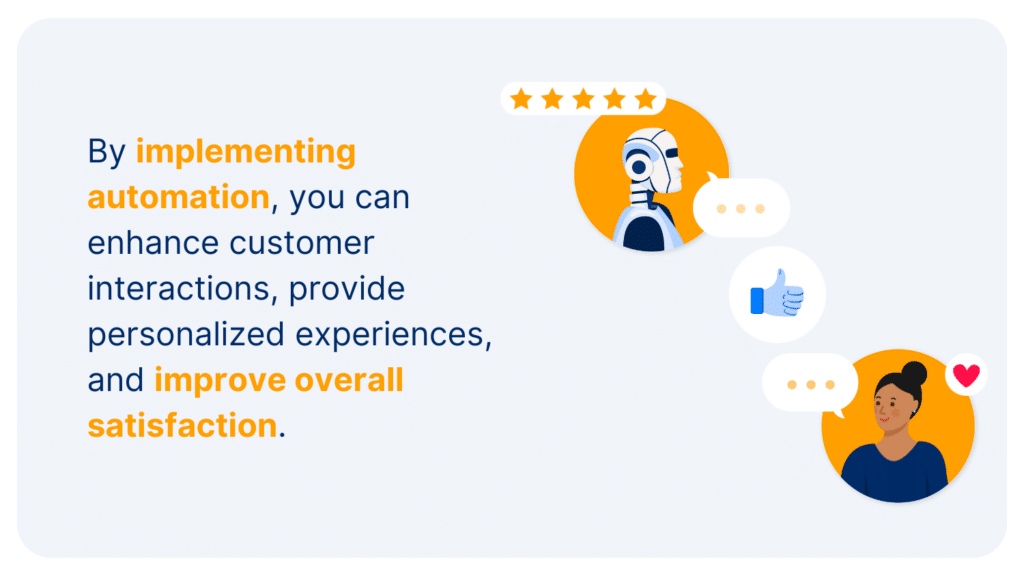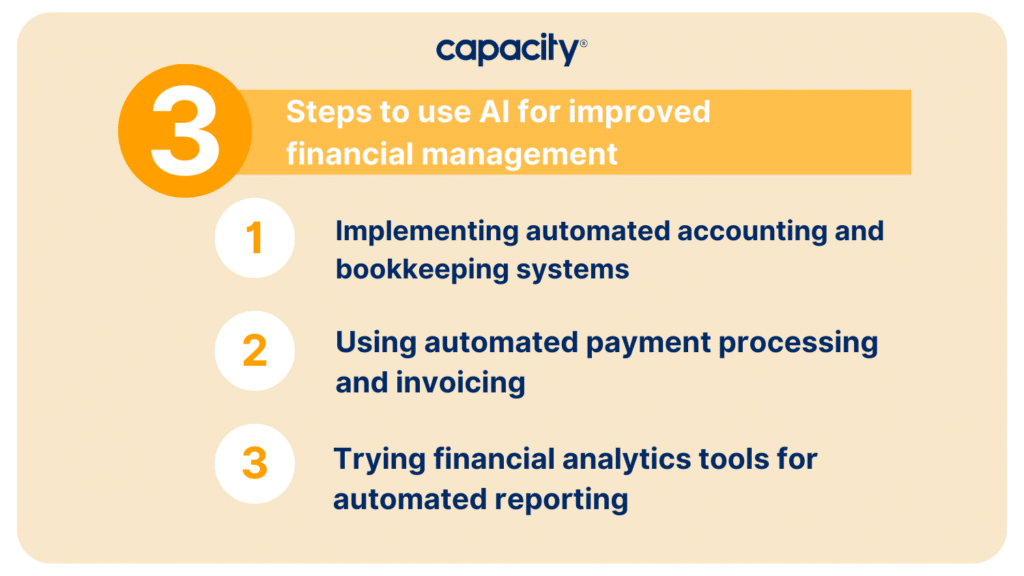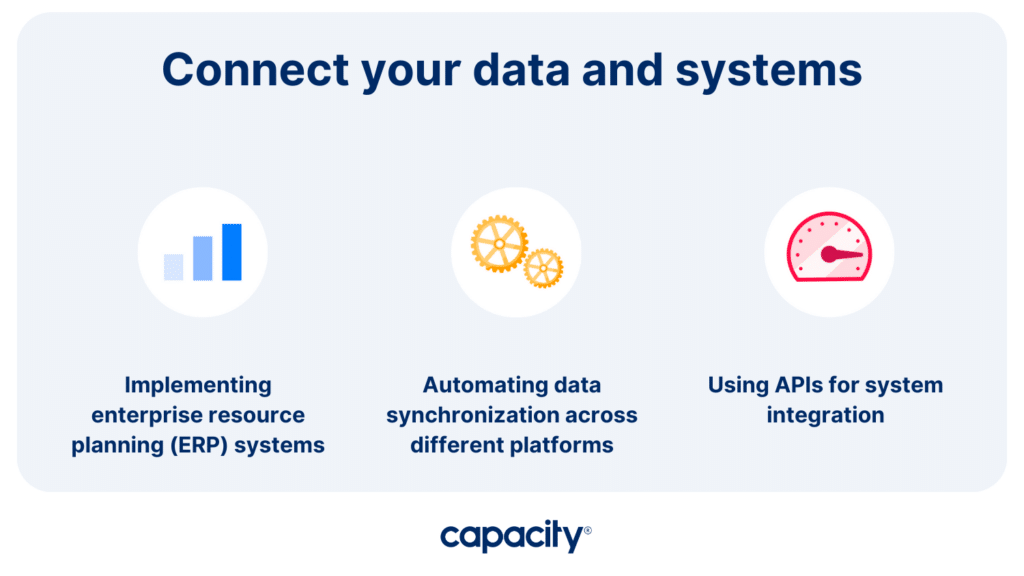Using automation has become a game-changer for organizations seeking growth and efficiency. This blog post will explore and break down twelve highly effective ways to automate your business processes and propel your company’s success. Whether you’re an IT professional or a customer operations expert, this guide will provide valuable insights into streamlining internal processes, enhancing customer interactions, optimizing supply chain management, improving financial management, boosting employee productivity, connecting data and systems, and ensuring data security and compliance. So let’s dive in and discover how automation can revolutionize your business.
Streamline your internal processes
Efficient internal processes form the foundation of a successful business. In fact, the number of automation architects in enterprise companies is forecast to rise by 70% by 2025, up from 20% in 2020. By implementing automation, you can eliminate manual and time-consuming tasks, allowing your team to focus on more strategic activities. Here are three powerful ways to streamline your internal processes:
- Implementing workflow automation software: Streamline your business operations using workflow automation software. This technology lets you define and automate your organization’s processes, ensuring seamless task management, collaboration, and efficient resource allocation.
- Automating repetitive tasks with robotic process automation (RPA): Free your employees from mundane and repetitive tasks by employing RPA. This technology uses software robots to automate rule-based, repetitive processes, reducing errors and accelerating task completion.
- Using AI for data processing and analysis: Use the power of artificial intelligence (AI) to handle massive amounts of data and gain valuable insights. AI-powered algorithms can process and analyze data at scale, enabling you to make data-driven decisions and uncover hidden opportunities.
Simplify the way your customers interact with you
Delighting customers is crucial for business growth. By implementing automation, you can enhance customer interactions, provide personalized experiences, and improve overall satisfaction. Consider the following automation techniques:

- Implementing chatbots for customer support: Integrate chatbots into your customer support channels to provide instant assistance and round-the-clock support. Chatbots can handle common inquiries, guide customers through self-service options, and escalate complex issues to human agents when necessary.
- Personalizing customer interactions through automated marketing campaigns: Deliver tailored messages to your customers using automated marketing campaigns. For example, by using customer data, you can send personalized emails, recommend relevant products, and provide targeted offers, enhancing engagement and conversions.
- Using automated feedback systems and surveys: Gather valuable customer feedback by implementing mechanical feedback systems and surveys. Automating this process ensures timely feedback collection, enabling you to make informed decisions and continuously improve your products or services based on customer insights.
Add automation to optimize your supply chain management.
Efficient supply chain management is essential for meeting customer demands and maintaining a competitive edge. Embracing automation can streamline your supply chain processes and increase operational efficiency. Consider the following automation techniques:
- Implementing automated inventory management systems: Optimize inventory control by implementing automated systems that track stock levels, automate replenishment, and provide real-time visibility into your inventory. This helps prevent stockouts, reduce carrying costs, and improve order fulfillment.
- Using predictive analytics for demand forecasting: Use predictive analytics to forecast demand accurately. By analyzing historical data and market trends, you can anticipate customer demand, optimize inventory levels, and minimize stockouts or overstock situations.
- Adding automated order processing and fulfillment: Automate your order processing and fulfillment workflows to streamline operations and reduce errors. Computerized systems can process orders, generate shipping labels, and track deliveries, ensuring prompt and accurate order fulfillment.
Use AI for improved financial management
Effective financial management is vital for the growth and sustainability of any business. Incorporating automation into your financial processes can enhance accuracy, reduce manual effort, and gain better control over your finances. Consider the following automation techniques:

- Implementing automated accounting and bookkeeping systems: Simplify your financial processes by implementing automated accounting and bookkeeping systems. These tools can automate data entry, generate financial reports, and streamline the reconciliation, saving time and minimizing errors.
- Using automated payment processing and invoicing: Automate payment processing and invoicing to streamline your financial transactions. Integrating with payment gateways and accounting systems allows you to generate invoices, process payments, and reconcile accounts automatically, improving cash flow management.
- Trying financial analytics tools for automated reporting: Use financial analytics tools to automate the generation of reports and financial insights. These tools can consolidate data from various sources, perform analysis, and present actionable insights, enabling you to make informed financial decisions efficiently.
Boost your employee productivity with an automated business
Engaged and productive employees are crucial for achieving business goals. By implementing automation, you can empower your workforce and enable them to focus on strategic initiatives. Consider the following automation techniques:
- Adding project management software for task automation: Simplify project management and task allocation by implementing project management software. These tools facilitate task assignments, progress tracking, and collaboration, ensuring projects stay on track and within deadlines.
- Automating employee onboarding and training processes: Expedite the onboarding and training of new employees by automating the process. Using automated onboarding platforms, you can streamline paperwork, deliver training modules, and provide necessary resources, enabling new hires to ramp up quickly.
- Implementing time-tracking and attendance systems: Simplify time-tracking and attendance management by implementing automated systems. These tools accurately record employee work hours, streamline payroll processing, and provide insights into resource efficacy, improving overall productivity.
Connect your data and systems
Seamless data integration and system connectivity are vital for efficient operations and informed decision-making. By implementing automation, you can connect disparate systems and streamline data flow. Consider the following automation techniques:

- Implementing enterprise resource planning (ERP) systems: Integrate your organization’s various systems and departments using ERP systems. These platforms centralize data, automate processes, and provide real-time insights, fostering efficient collaboration and informed decision-making.
- Automating data synchronization across different platforms: Ensure data consistency by automating data synchronization across other platforms. Integration tools and APIs can eliminate manual data entry, reduce errors, and improve data accuracy and accessibility.
- Using APIs for system integration: Use APIs (Application Programming Interfaces) to connect your business applications and enable seamless data exchange. APIs facilitate the integration of different software systems, allowing data to flow smoothly and enabling process automation.
Ensure data security and compliance
Data security and compliance are critical considerations for any business. Implementing automation can enhance data protection, streamline compliance processes, and mitigate security risks. Consider the following automation techniques:
- Adding automated data backup and recovery systems: Protect your valuable data by implementing computerized data backup and recovery systems. These systems ensure regular backups, simplify the recovery process and minimize the risk of data loss due to system failures or cyber-attacks.
- Using automated security protocols and threat detection: Strengthen your organization’s security posture using automated security protocols and threat detection systems. These tools continuously monitor network activities, identify potential threats, and respond promptly to mitigate security risks.
- Ensuring compliance with data protection regulations through automation: Simplify compliance with data protection regulations. Automated systems can assist in managing data subject requests, monitoring data privacy controls, and generating compliance reports, ensuring your organization adheres to relevant rules.
Automation holds immense potential for transforming businesses across various industries. By streamlining internal processes, enhancing customer interactions, optimizing supply chain management, improving financial management, boosting employee productivity, connecting data and systems, and ensuring data security and compliance, you can unleash the full power of an automated business. Embrace automation’s opportunities, and take your company’s growth to new heights. Start automating today and witness the transformative impact it can have on your organization.
Ready to automate your business operations? Get started today for free!

Automate Your Work
Capacity’s enterprise AI chatbot can help:
- Answer FAQs anytime, anywhere
- Find relevant documents within seconds
- Give surveys and collect feedback














































